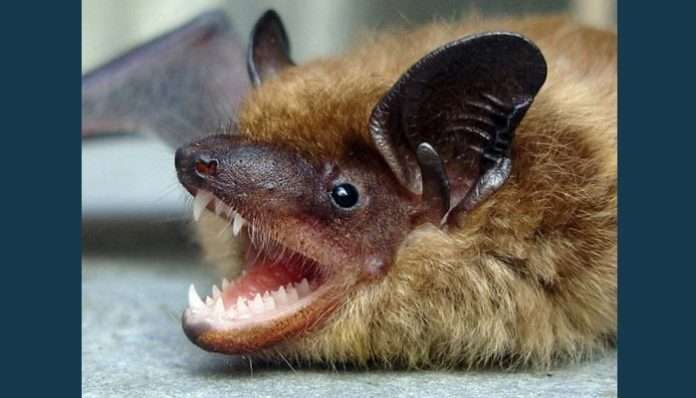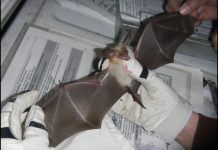UTAH, June 30, 2022 (Gephardt Daily) — Utah public health officials have confirmed the first three cases of rabies in bats this summer, and in each case, a human or pet was exposed to the deadly virus.
The humans received preventive vaccines, and the dogs received boosters and a 45-day home quarantine because they were up-to-date on their rabies vaccinations, says a statement issued by the Utah Department of Health and Human Services Bureau of Epidemiology.
“A bite or scratch from any infected mammal can transmit rabies,” the statement says. “Contact with infected bats is the leading cause of human rabies deaths in Utah and we average about 15 rabid animals reported each year. Last year, five people in the U.S. died as a result of rabies exposure.”
If an unvaccinated pet is exposed to a rabid animal, the owner’s only options are euthanasia or a four-month professional isolation at the owner’s expense.
“Keeping your pet current on its rabies vaccines is the most important and affordable way to protect you and your pet from rabies,” the statement says.
Because bats’ teeth and claws are so small, a bat bite or scratch may not be seen or even felt by the injured person. Any bat exposure should be reported and taken seriously. Symptoms in humans may not appear for weeks to months after exposure, and may initially be similar to the flu, then progress to anxiety, confusion, abnormal behavior, and delirium, the statement says. Once clinical signs of rabies appear in a person, the disease is nearly always fatal.
“If you find yourself near a bat, dead or alive, do not touch, hit, or destroy it and do not try to remove it yourself,” said Hannah Rettler, epidemiologist with the Utah DHHS. Call your local animal control office or the Utah Division of Wildlife Resources to collect the animal for rabies testing.
Signs of rabies in animals include changes in normal behavior such as aggression, attacking without reason, foaming at the mouth, no interest in food or water, staggering, or paralysis. Infected wild animals may also act uncharacteristically tame or unafraid of humans. Infected bats may be seen flying around during the daytime, resting on the ground, or may show no noticeable signs at all.
If you see an animal exhibiting any rabies signs or think a pet or person may have been exposed to a rabid animal, call your local health department to report it and receive instructions to submit animals for testing and determine whether preventive treatment is necessary.
In addition to vaccinating your pets, follow these guidelines to help reduce your risk for getting rabies.
- Keep pets inside and supervise them when outside.
- Call your local animal control officials to report stray dogs and cats.
- Don’t approach wild animals. Stay away from any animal that seems unafraid or aggressive. If you see a wild animal acting strangely, report it to the nearest local Utah Division of Wildlife Resources office or animal control agency.
- Keep bats out of your home. Seal any cracks and gaps where bats can enter your home.
- Consider the rabies pre-exposure vaccine if you plan to travel to a country where rabies is common. Ask your healthcare provider or travel clinic whether you should receive the rabies vaccine.
- If you or your pet is exposed to a wild animal, the Utah Public Health Laboratory can test the wild animal for rabies if testing is warranted.
- If you are bitten by any animal (domestic or wild), immediately wash the wound well with soap and water and see a healthcare provider.
To learn more about rabies visit, epi.health.utah.gov/rabies.







